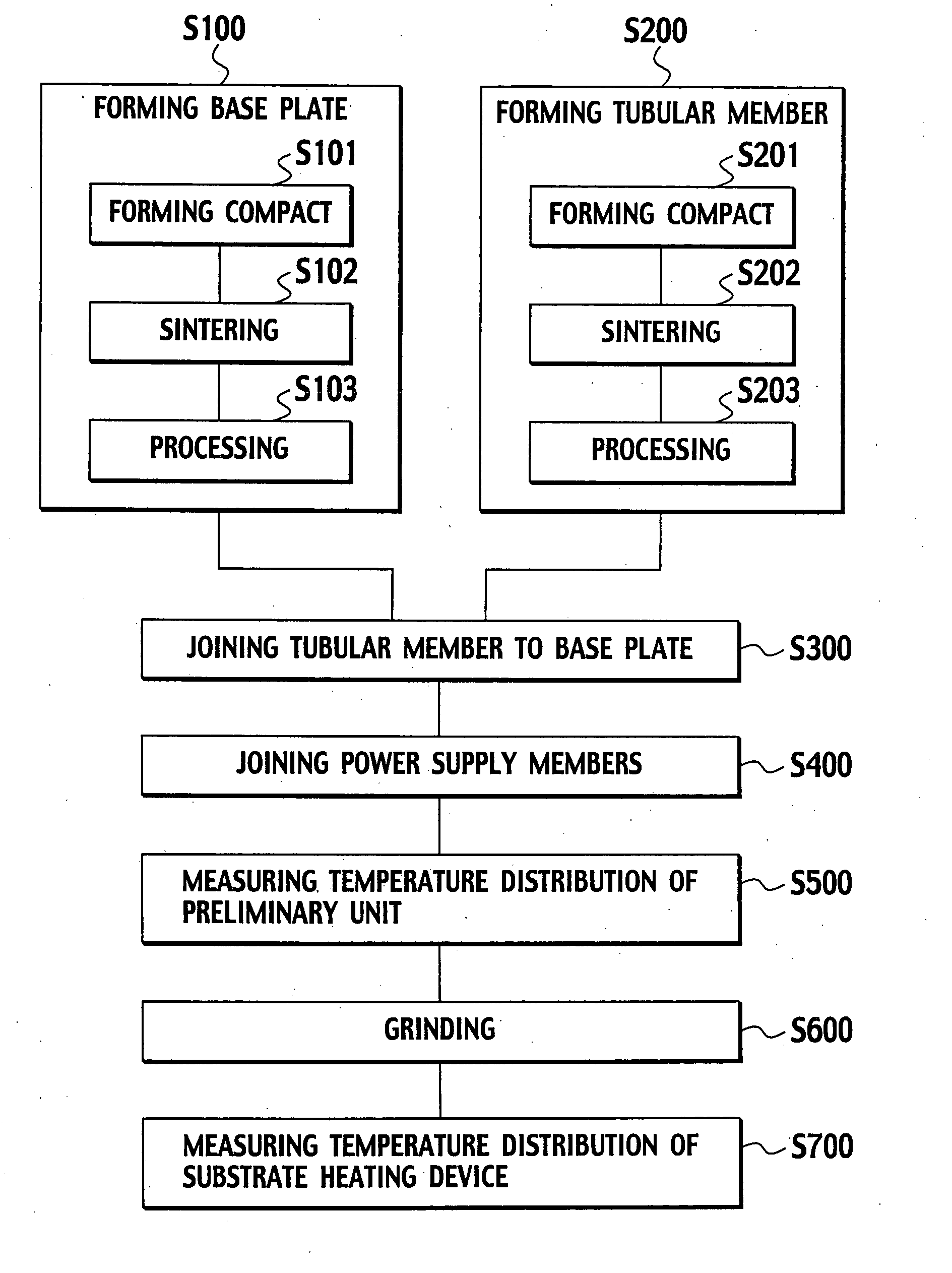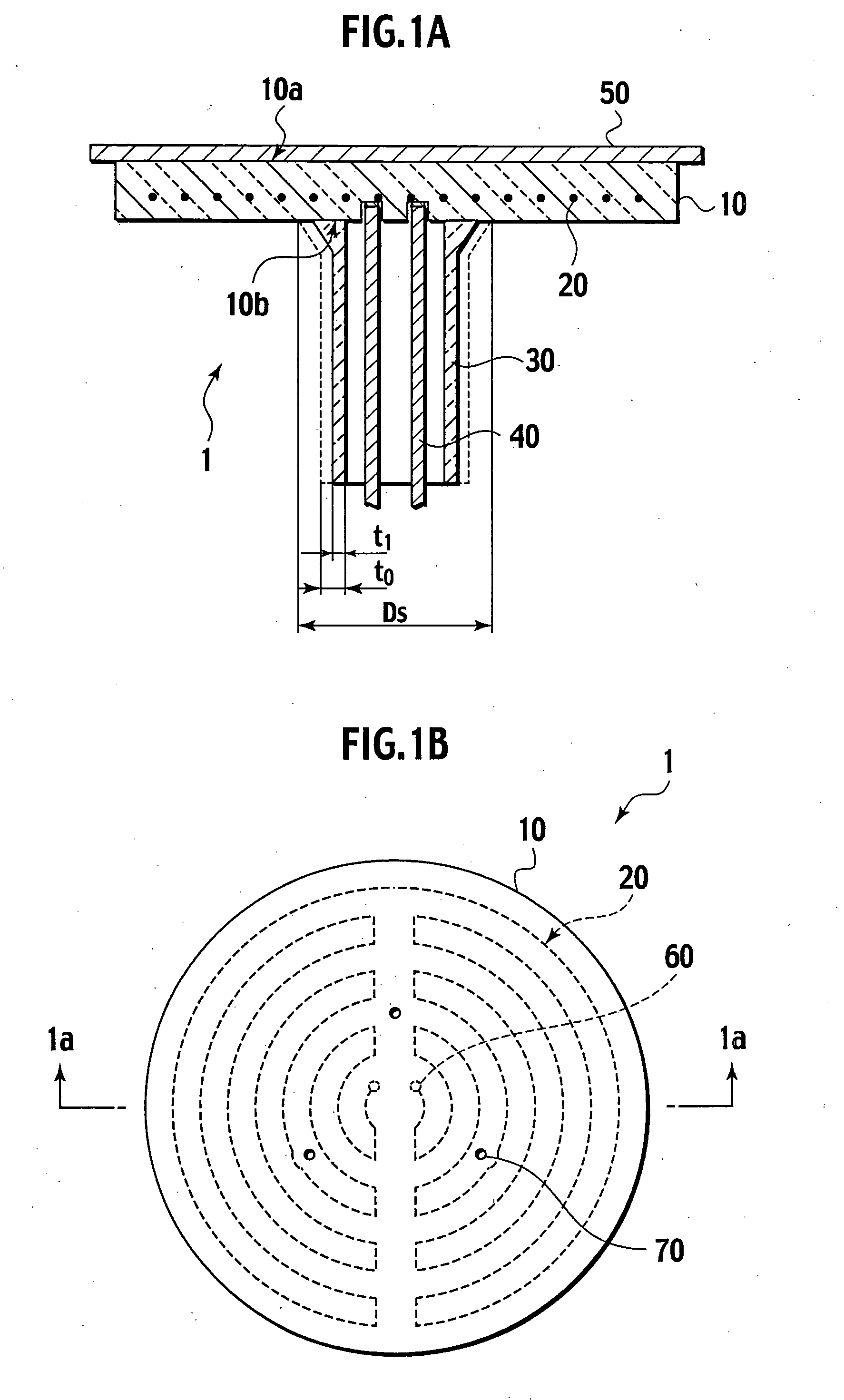Substrate heating device and manufacturing method for the same
a heating device and substrate technology, applied in the direction of heater elements, hot plate heating arrangements, instruments, etc., can solve the problem of difficult to achieve an extremely high level of temperature uniformity based on the conventional design adjustment of resistance heating elements or tubular members, and achieve the effect of high accuracy
- Summary
- Abstract
- Description
- Claims
- Application Information
AI Technical Summary
Benefits of technology
Problems solved by technology
Method used
Image
Examples
first working example
[0085] The ceramic base plate 10 in which the resistance heating element 20 are buried is formed under the following conditions. An acrylic resin binder is added to a ceramic mixed powder, which is made by adding 5% by weight of Y2O3 to an AlN powder obtained through reductive nitridation, and granules are then generated through spray granulation. These granules are filled in a mold and pressed so as to form a preform. Next, a channel is formed at positions for the resistance heating element 20 of the preform to be buried by transcription. Linear Mo resistance heating element 20 0.5 mm in diameter processed in the shape shown in FIG. 1B is placed in the channel, the ceramic raw powder is filled thereupon, and the entirety is re-pressed in a uniaxial direction. The pressing pressure is 200 kg / cm2. This forms the ceramic compact for the base plate 10 in which the resistance heating element20 is buried.
[0086] The ceramic compact is sintered using a hot pressing method. Sintering condi...
second working example
[0097] A preliminary unit for the substrate heating device 1 made up of an aluminum nitride base plate 10 and the tubular member 30 is formed. The external diameter of the base plate 10 is 340 mm, and the thickness is 15 mm. Furthermore, as shown in FIG. 3B, two types of resistance heating element 20a, 20b are buried in the base plate 10 so as to be a two-layer structure parallel to the substrate heating surface 10a. The upper layer resistance heating element 20a is buried at a depth of 6.5 mm from the substrate heating surface 10a, and the lower layer resistance heating element 20b is buried at a depth of 12 mm from the substrate heating surface 10a. The external diameter of the junction 10b of the tubular member 30 obtained by sintering is 90 mm, the external diameter of the tubular member 30 in the middle of the axis is 58 mm with thickness t0 of 3.5 mm, and the length thereof is 220 mm. The manufacturing conditions other than those above are the same as in the first working exam...
PUM
| Property | Measurement | Unit |
|---|---|---|
| Thickness | aaaaa | aaaaa |
| Temperature | aaaaa | aaaaa |
| Thickness | aaaaa | aaaaa |
Abstract
Description
Claims
Application Information
 Login to View More
Login to View More - R&D
- Intellectual Property
- Life Sciences
- Materials
- Tech Scout
- Unparalleled Data Quality
- Higher Quality Content
- 60% Fewer Hallucinations
Browse by: Latest US Patents, China's latest patents, Technical Efficacy Thesaurus, Application Domain, Technology Topic, Popular Technical Reports.
© 2025 PatSnap. All rights reserved.Legal|Privacy policy|Modern Slavery Act Transparency Statement|Sitemap|About US| Contact US: help@patsnap.com



